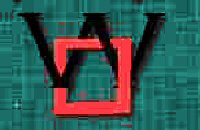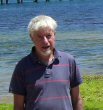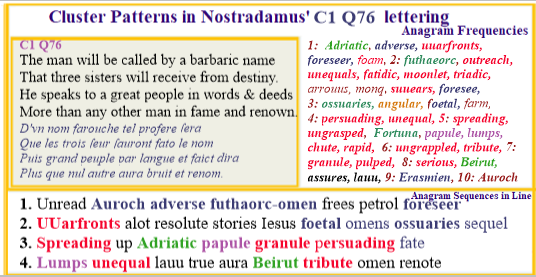 Analyses of all verses
Analyses of all verses
|
 Web Site
Web Site |
 All
Sefirots All
Sefirots |
Nostradamus C1 Q76: The powers of a new man lie in speech with links to Viking legends
Copyright: Allan Webber, December 2015, 2022
 The
two verses that make up the pair in this part of the Paraclete series
are shown alongside. They are paired because of the parallelism in the
third line of text in each.
The
two verses that make up the pair in this part of the Paraclete series
are shown alongside. They are paired because of the parallelism in the
third line of text in each.

 The visible content of C1 Q76 parallels
that of C1 Q95 with the former of the two bearing a Nordic connection
and the latter delivering more specific details about the persons birth.
The visible content of C1 Q76 parallels
that of C1 Q95 with the former of the two bearing a Nordic connection
and the latter delivering more specific details about the persons birth.
The three sisters in the Nordic tales bear a similar function to the Roman Moiras or Fates and collectively they are seen as responsible for the power of words including names and the fate tied to any name. Each of these verses carries anagrams that speak to the concept of a genetic heritage of a man who carries the destiny of others through his power of speech. The name of this man may well be Auroch as that name can be found as an anagram in the first line. It is associated with ancient oxen, power, strength and the letter U.
There is an aptness to the name auroch since there have been attempts going back over a hundred years that have tried to recreate this extinct ancient beast. Selective breeding was the basis of the original attempts but now with advancing knowledge of the genome the shift has been to recreate the creature using DNA from ancient bones.
 In
the second line of this verse there is one of the rare anagrams for
ossuaries (L2:
ois ſeur ſau) which is the
logical place to find bones from which active DNA can still be
extracted.
In
the second line of this verse there is one of the rare anagrams for
ossuaries (L2:
ois ſeur ſau) which is the
logical place to find bones from which active DNA can still be
extracted.
And in the anagrams of this verse there is a hint that the same goal is sought for Christ's foetal DNA. There are also hints these endeavours are spurred by threats to mankinds existence due to the scourges Nostradamus foresaw for the end of this century.